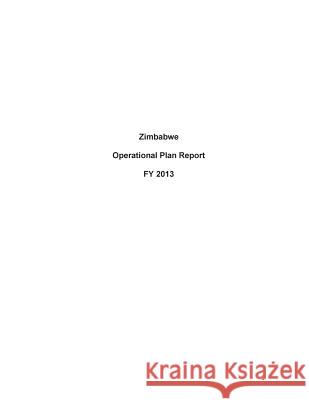Zimbabwe Operational Plan Report FY 2013 » książka
Zimbabwe Operational Plan Report FY 2013
ISBN-13: 9781503194113 / Angielski / Miękka / 2014 / 128 str.
The country continues to experience a generalized HIV epidemic with an estimated 1.2 million HIV-infected adults and children in 2011 and approximately 58,000 deaths each year. Social, cultural, and economic factors contributing to HIV transmission include transactional sex, multiple and concurrent partners, alcohol abuse, low awareness of HIV infection status, lack of ART use in undiagnosed individuals, poor treatment adherence, and low levels of male circumcision (MC). While prevalence among youth has dropped significantly, it is worth noting that prevalence among girls was twice that of boys of the same age. HIV is the leading cause of death among adults and accounts for over 27% of all deaths among mothers and infants. Maternal mortality rate nearly tripled between 1994 and 2010. Zimbabwe's TB case rate (603 per 100,000) is one of the highest in the world. The TB epidemic in Zimbabwe is largely HIV driven with a very high TB/HIV co-infection rate (at 80%) with an increasing number of MDR and XDR cases. TB is the second leading cause of adult morbidity and mortality in Zimbabwe. National Response - The National AIDS Council (NAC) and the Ministry of Health and Child Welfare (MOHCW) lead the national HIV/AIDS response and have outlined their goals in Zimbabwe National Strategic Plan (ZNASPII) 2011-2015. While the level of institutional leadership within the MOHCW is high in terms of technical direction and policy setting, the capacity for implementation continues to be limited. For the MOHCW low capacity is largely an outcome of limited national resources for programming, which affects its capacity to deploy and adequately train sufficient experienced health professionals, provide adequate commodities, and provide a high level of monitoring and supervision to ensure high quality service delivery. As such, donor resources have been essential to national prevention, care, treatment, and health systems strengthening (HSS) efforts. The majority of HIV/AIDS-related activities are donor funded. Nevertheless, Zimbabwe has not received the magnitude of donor funding that countries with similar HIV burden have been fortunate to access. Zimbabwe is facing potential critical shortages of key inputs to achieve ambitious goals, particularly in the areas of treatment, prevention of mother-to-child transmission (PMTCT), and MC.











